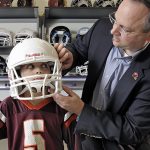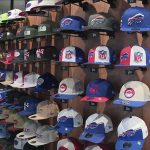Key measures of productivity and profitability improved for full-line sporting goods stores, while results specialty sport shops were less consistent, according to data in the newly released NSGA Cost of Doing Business Survey.
The report, published every two years by the National Sporting Goods Association, shows key metrics for full-line retailers have improved. Full-line retailers showed productivity gains-compared to the previous survey, done two years ago-in Sales per Selling Square Foot, Sales per Employee, Gross Margin on Merchandise Sales, Total Operating Expenses and Inventory Turnover. Profitability measures also improved in Return on Total Assets, Return on Net Worth and Net Operating Profit.
“Full-line stores were able to improve across the board,” said NSGA President & CEO Jim Faltinek. “They did a better job of increasing margins and turnover while lowering operating expenses.”
Specialty sport retailers produced mixed results. Sales per Selling Square Foot and Sales per Employee were both better than the previous survey, but Gross Margins and Inventory Turnover were down and Operating Expenses were up. Specialty retailers maintained their Net Operating Profit (2.8%) despite lower Return on Total Assets and Return on Net Worth.
“The NSGA Cost of Doing Business Survey shows specialty sport retailers-despite their best efforts-were hurt by a sharp drop in Gross Margin on Merchandise Sales,” Faltinek said. “Despite that and higher Total Operating Expenses, specialty retailers were able to maintain the same level of Net Operating Profit as the previous report.”
For specialty sports shops, Return on Net Worth, fell to 11.4% versus 11.9% in 2003, and Return on Total Assets, 2.9% versus 4.4%.
Both full-line and specialty sports retailers showed sharp increases in Sales Per Selling Square Foot. Full-line sporting goods stores reported $325 per selling square foot vs. $260 in 2003. Specialty sport shops reported $267 per selling square foot in 2005 versus $215 in 2003.
“Full-line sporting goods stores did a better job of improving gross margins on merchandise sales,” Faltinek said. Full-line shops improved their margins from 34.7% in 2003 to 35.5% in 2005. For specialty sport shops, margins fell from 43.7% in 2003 to 40.9% in 2005.
According to Faltinek, “This research effort provides sporting good stores with the most up-to-date comparative financial performance information available anywhere.”
There were 170 companies that participated in the 2005 study.
In addition to the segmentation of sporting good stores and specialty shops by sales volume, comparison categories include single versus multi-store operations, size of store and marketing mix. The study also provides comparisons to high-profit performing retailers.
Besides Balance Sheet and Income Data, the NSGA Cost of Doing Business Survey includes five measures of profitability, three measures of financial management and 14 measures of productivity. The study is provided at no cost to NSGA retailer members. Non-members can obtain the study for $250.









